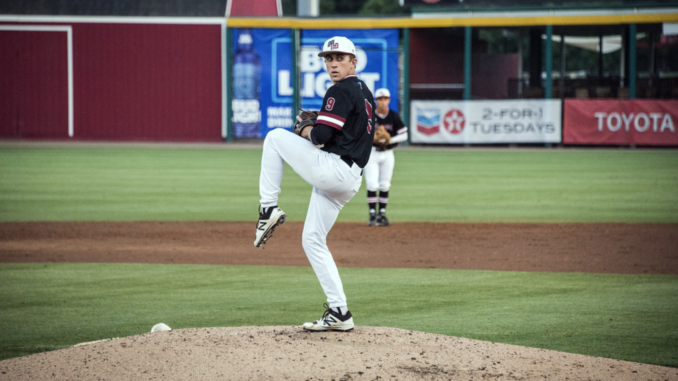
Earlier in February, the writers at Prospects1500 compiled a rankings list of the top farm systems heading into the 2021 season. The consensus lowest ranked farm system was the Washington Nationals. This is the team I cover, and while I myself ranked them last, I think there are some strong, breakout potential prospects.
One of the reasons the system is lacking is due to continued winning by the major league ballclub. The Nationals have been a contender in the National League for the past few years and won the World Series in 2019. Success at the major league level will put your team picking towards the tail end of the 1st round in the draft. That is not to say that later-round picks don’t make impacts down the road. But the immediate impact, system boosting prospects, often reside in the top half of the draft. The draft has unfortunately provided the Nationals with few impact prospects of late. International signings have had a much better return on impactful, major league contributors (Victor Robles and Juan Soto).
A second reason for the Nationals cellar-dwelling farm system, which has been a gripe amongst some fans, has been their constant use of high draft picks on pitching. This is the topic I want to dive into more in this article.
I think most baseball fans understand the importance of pitching. It’s often said that good pitching beats good hitting any day of the week. Mike Rizzo, the Nationals GM, has certainly emphasized pitching during his tenure. This has allowed the team to build quite an impressive starting rotation over the last five or so seasons. If you look at this year’s starting rotation, only one player is homegrown, Stephen Strasburg. The rest of the rotation will be a mix of pricey acquisitions in Max Scherzer and Patrick Corbin and aging vet Jon Lester. Every year it seems at the trade deadline, the team is also making a deal for bullpen arms.
Perhaps focusing on drafting pitching isn’t the wrong approach. Pitching can take more time to develop than position players. There is also a higher rate of busts. It seems as though the draft strategy over the past five seasons has been to draft a lot of pitching and hope that a few develop into major league contributors. Unfortunately, there has been little to come to fruition. I’ve searched over the previous six drafts for the Nationals and found some interesting facts about their emphasis on drafting pitchers.
Starting with the 2015 draft, the Nationals have selected 205 players over that span. Of those 205 players, 106 were pitchers (52%). Initially, this ratio looks evenly distributed between drafting pitchers and position players. Based on these numbers, the perceived bias of drafting heavily on pitchers seems unfounded. To dive into their drafts more, I focused only on their first ten selections in those drafts. In those 56 picks, 34 were pitchers (61%). Clearly, this shows an effort to focus on pitching in the earlier rounds. Perhaps part of the reasoning is that is how their draft board played out or is their overall draft philosophy.
If you read my Top 50 list of the Nats this year, you will also see that 12 of the top 20 prospects in the system (60%) are pitchers. That number could have been even higher if it were not for trading away Eddy Yean and Wil Crowe to the Pirates for Josh Bell. I want to take a closer look at these 12 pitchers and where they could end up helping the big league club.
- Jackson Rutledge RHP (#19 overall in 2019 Draft) – Rutledge drew rave reviews at the alternate site. His fastball is topping out at 100+ mph and is overpowering. The Nationals invited Rutledge to spring training, so we will see how he’s developed while getting a taste of the big leagues. The hope is to continue developing secondary pitches and being a top of the rotation starter for years to come.
The #Nationals don’t have a prospect inside my top 100, but Jackson Rutledge will likely breakthrough this season. The 6’8/250 RHP spent the offseason working on mechanics and a repeatable delivery. His fastball reaches 100+ and his changeup is developing well. Stock = 📈 pic.twitter.com/HX5bYEfBP5
— Chris Clegg (@RotoClegg) February 12, 2021
- Cade Cavalli RHP (#22 overall in 2020 Draft) – There is optimism that Cavalli and Rutledge will be the future #1 and #2 starters for the Nationals. Cavalli has great stuff and was able to pitch about 50 innings at the alternate site. This sets him up to start in either Fredericksburg or Wilmington to start the season. I would not be surprised to see him get a few starts in AA or AAA by the season’s end.
- Andry Lara RHP (J2 Signing in 2019) – Lara participated in instructs this year and was impressive. He likely starts the year in low A. His work ethic and ability to absorb coaching have coaches thinking he could be a mid-rotation starter down the road.
The more I read and watch Andry Lara, the excitement for his progress builds. 16 yrs old. 6’4” – 217lbs. 90-95 MPH. Effortless, repeatable delivery. Watch the nasty Slider/curve at the :40 mark @Prospects1500 #nationals #prospects pic.twitter.com/FJ6oZzZGlF
— Jacob Swain (@jacob_swain3) December 15, 2019
- Cole Henry RHP (#55 overall in 2020 Draft) – The 2nd round pick in the 2020 draft, Henry is another power arm similar to Cavalli. Henry projects as a middle-of-the-rotation starter. Command is the main thing Henry needs to work on and could propel him to a top of rotation guy if that improves.
- Mason Denaburg RHP (#27 overall in 2018 Draft) – Everything comes down to health for Denaburg. Injuries have limited him to just 20 innings in his pro career. The talent is there with a mid to upper 90’s fastball and a developing curveball and change. This is a player that could have a big bounce-back year in the eyes of prospectors. If healthy, he finds himself in the middle or end of the rotation.
- Matt Cronin LHP (#123 overall in 2019 Draft) – Cronin was dominant in his relief appearances in 2019, and everything he showed during instructs backed that up. With the perpetual lack of bullpen help, Cronin is a player I think you could see in the majors during 2021. Whether it be a setup man or the team’s closer, it is still to be seen, but I fully expect him to fill one of those roles eventually.
Matt Cronin had the look of a high-leverage reliever at instructs 👀
The former @RazorbackBSB closer is one of 10 under-the-radar names who impressed.
Full list: https://t.co/EDwHAed3GW pic.twitter.com/gCCNXyyhSq
— Baseball America (@BaseballAmerica) November 26, 2020
- Tim Cate LHP (#65 overall in 2018 Draft) – Cate is the counter to all the power pitchers in the system. His fastball operates in the upper 80’s, touching 90 occasionally. His most dominant pitch is his 60-grade curveball. It’s his wipeout pitch and, combined with a changeup, gives him two offspeed pitches he feels comfortable throwing in any count. He works both sides of the plate with ease, and his success is largely based on his ability to throw strikes. Cate projects as a back-end rotation pitcher, and I think you see him gain a few starts in 2021.
- Seth Romero LHP (#25 overall in 2017 Draft) – The former first-round pick in 2017, Romero has the ability, like Denaburg, to reemerge as a legitimate option for the Nationals. Off-field issues and injuries seem to be behind him. He did get the opportunity to pitch for the Nationals in 2020, but his outings were largely disappointing. I’m not putting a lot of stock in the limited sample size and look for Romero to start the season in AAA. Romero could end up as a 4th or 5th starter, or I think you could see him as a middle reliever.
- Joan Adon RHP (J2 Signing in 2016) – Adon started 21 games in 2019, but his lack of command right now could see him switch to the bullpen. He has a powerful fastball that ranges in the mid 90’s. He showed the ability to pitch 5+ innings on average during his starts. With the command being an issue, he could be better suited for a relief role where the fastball could tick up into the upper 90’s.
.@HagerstownSuns RHP and Washington @Nationals prospect Joan Adon against @shorebirds. #Nats #Nationals pic.twitter.com/3NfH2TTy55
— NatsGM (@NatsGMdotcom) May 25, 2019
- Holden Powell RHP (#94 overall in 2020 Draft) – Powell is another pitcher, like Cronin, that I see moving quickly. He has a mid 90’s fastball combine with a wipeout slider that helped him save 26 games in his career at UCLA. His control improved greatly from 2019 to 2020. A set-up man or eventual closer is where I can see Powell fitting in with the Nationals.
.@HagerstownSuns RHP and Washington @Nationals prospect Joan Adon against @shorebirds. #Nats #Nationals pic.twitter.com/3NfH2TTy55
— NatsGM (@NatsGMdotcom) May 25, 2019
- Tyler Dyson RHP (#153 overall in 2019 Draft) – Dyson has a five-pitch arsenal that should allow him to remain a starter as he develops. Having pitched in a college rotation at Florida that included Brady Singer and Jackson Kowar, Dyson has the experience to remain in a rotation.
- Reid Schaller RHP (#101 overall in 2018 Draft) – Schaller was a 3rd round pick out of Vanderbilt in 2018. He has been working on developing a slider to go with his fastball/changeup combination. I see him probably being in a bullpen role eventually.
Here is how I see these pitchers in their possible roles:
Starting Rotation
- Cavalli
- Rutledge
- Henry
- Lara
- Cate
Middle Relief
- Romero
- Denaburg
- Schaller
- Adon
- Dyson
Set up/Closer
- Cronin
- Powell

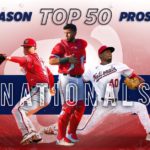
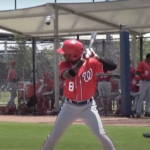
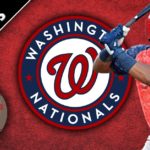
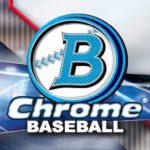
Nice report, Jacob.